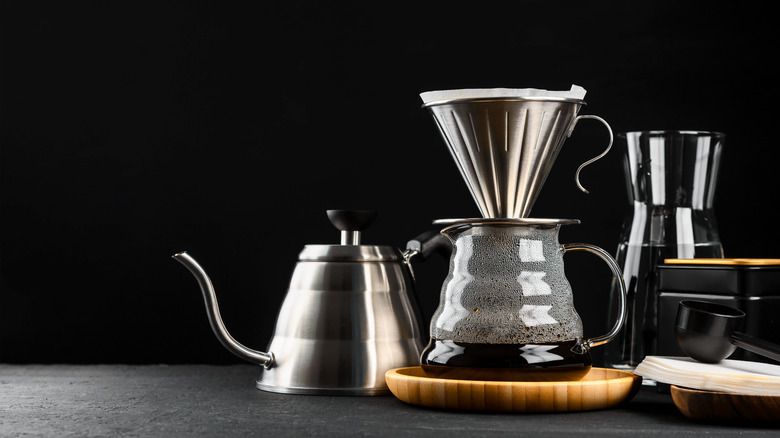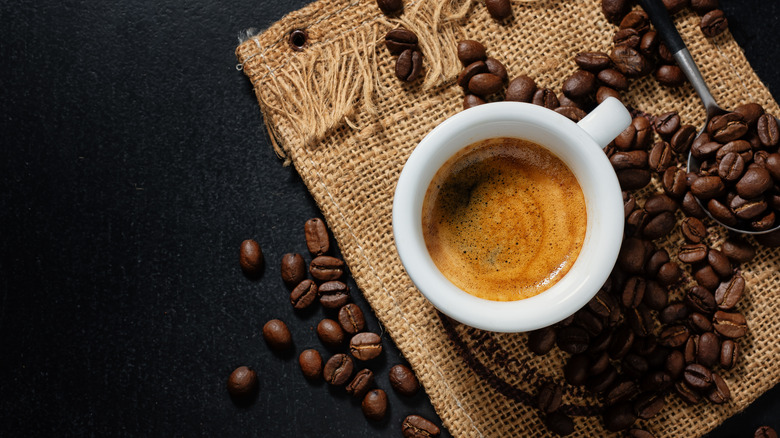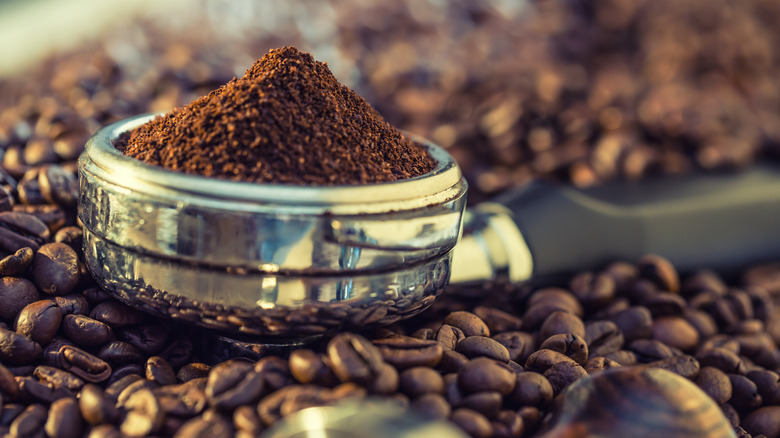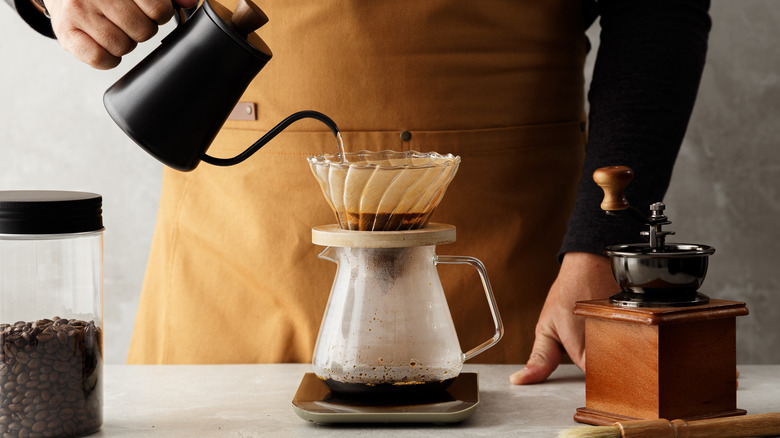How Science Can Help You Make Pourover Coffee Even Better
Whether you swear by your Moka pot, own a high-tech espresso machine, or prefer to press a button on the Keurig, making coffee is a quintessential morning ritual. There's something rhythmic and relaxing about setting out your favorite mug while the scent of coffee wafts through your kitchen. While you wait for your pot to brew, let the morning wash over you; it's bound to be a good day.
Of the many techniques for brewing coffee at home, pourover coffee is a common and surprisingly simple process. Pourover calls for ground coffee to be placed in a filter, with water poured over it at well-timed intervals. Pourover coffee takes slightly more time than methods like the French press, but ultimately yields a cleaner, more dimensional output, says CNN.
Yet, while pourover is generally a worthwhile alternative to quicker coffee-making methods, a few strategic changes will ensure you're getting the best flavor our of your cup. To optimize your next foray into barista territory, grab your Chemex or Hario V60 and dive into the science. There's a reason pourover calls for such precision.
Use fresh beans, roasted within a few days
While using pre-ground beans may seem like a smart, easy, and time-efficient strategy, grinding your coffee is worth the extra effort. Always start out with whole beans, which retain flavor far better than pre-ground ones. The explanation for this retention comes down to carbon dioxide. According to The Atlantic, coffee beans contain a decent amount of carbon dioxide, which helps preserve coffee's quality and scent by limiting oxidation. There's a sweet spot, however, in buying freshly-roasted beans, which carry the highest quantities of carbon dioxide. When buying your next batch, look for beans roasted within a few days. Use coffee too soon after roasting and you'll have a less flavorful, sometimes sour cup; wait too long, and your coffee will have lost too much carbon dioxide, making it taste weaker.
As for how to grind your fresh beans, opt for a burr grinder over a more traditional blade grinder; blade grinders yield randomly-sized, often erratic particles, whereas burr grinders allow for more uniform pieces (via the Chicago Tribune). This shift will result in a more consistent and even brew.
Bean size matters
The size and texture of your beans may seem nominal in making pourover coffee, but they drastically impact taste. According to Smithsonian Magazine, pourover coffee is an example of a flow-through coffee-making system. The size of your grind therefore affects the water's flow rate. Depending on how coarse or fine your beans are, they will either assist or limit water retention.
As such, opt for a uniform medium grind: not too fine, not quite coarse. Per Blue Bottle Coffee, grinding beans to this middle tier is ideal for balancing water flow, though the optimal size ultimately depends on how much coffee you're making. When brewing a larger batch for a few servings, grind your beans more coarsely than you would for an isolated cup. This way, water won't over-extract the coffee, producing more bitter flavor.
Grind size also determines brew time, according to Bon Appetit. Grind beans too finely and the water won't drip through as easily, therefore requiring more of your precious morning time. Grind beans too coarsely, however, and water will trickle down too fast, resulting in a saltier, sour taste.
Pourover coffee hinges on water temperature, timing, and technique
Per Serious Eats, manual brewing methods like pourover come with plenty of variables that increase the risk of yielding a not-quite-right cup. To truly master the art of the pourover, you'll have to finesse your pouring strategy. Once your beans are ready, set your electric kettle to between 205 and 210 degrees Fahrenheit. Pouring water from one apparatus into another makes it lose roughly 10 degrees, Serious Eats says, so heat your water slightly higher than you'd want it, as the "ideal brew temperature" is 200 degrees.
Thanks to the aforementioned carbon dioxide content of coffee beans, the pouring process requires multiple stages. The first phase, known as blooming, requires adding a minimal amount of water to your beans and letting the combination sit for anywhere between thirty seconds to a minute. During this time, science runs its course, helping your beans let off gasses and priming them for extraction.
"You should see large bubbles coming up from your coffee," Atlas Coffee Club's Colby Cox told CNN. "This is natural trapped gasses from the fresh coffee escaping. If you don't give it time between pours, this gas gets trapped in your final brew and can make it taste overly acidic."
Once your pourover has bloomed, add the rest of your water and let your coffee drip. Don't worry if it doesn't taste perfect on the first try; pourover requires patience and a learning curve. Once you grasp the science, you'll be brewing cafe-worthy coffee in no time.



